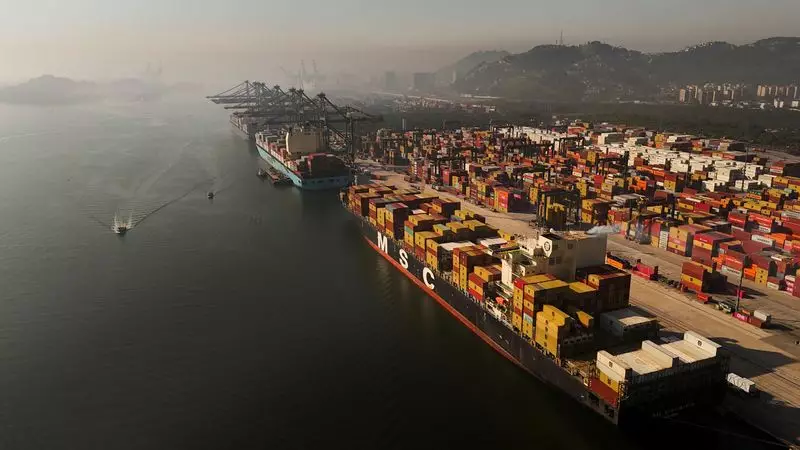In recent discussions regarding global trade dynamics, analysts at UBS have posited a timeline for a potential trade war that could reshape economic landscapes incrementally. Breaking this timeline into several phases allows for a clearer understanding of the intricate factors at play, ranging from political maneuvering to economic repercussions.
Currently, we find ourselves in what UBS has dubbed the “tweet phase,” a phase characterized by the power of social media and public declarations. This initial stage is not merely a precursor to official governmental actions but rather a strategic maneuver where political figures communicate demands and intentions to their counterparts and the public. By navigating this digital landscape, these leaders establish negotiating stances, apply pressure, and frame the narrative before the formalities of trade negotiations begin. Social media’s immediacy allows for rapid dissemination of ideas, sometimes leading to unpredictable reactions that can define the nature of upcoming negotiations.
As we look toward the future, the anticipation of the “imposition phase” materializing in early 2025 sets the stage for more concrete actions. During this time, legal and procedural frameworks will be established to impose tariffs. The complexities of legal scrutiny cannot be understated, as governments must ensure compliance with both domestic and international laws. This phase requires careful consideration, and while some groundwork may already be laid, much depends on shifting political priorities and the urgency for decisive action while avoiding legal pitfalls.
Should the imposition phase unfold as anticipated, we would transition to the “impact phase” in the latter half of 2025. In this phase, businesses will primarily respond to the new economic realities shaped by tariffs. Companies are likely to adopt preemptive measures such as stockpiling resources and recalibrating inventories to safeguard against potential disruptions. However, the ramifications of these tariffs would likely extend beyond immediate trade disruptions to broader economic indicators, including slowdowns in growth and diminished trade volumes, well before businesses report impacted earnings. This lag in response may contribute to a trickle-down effect, revealing the intricate relationship between corporate strategies and macroeconomic performance.
Simultaneously, a “negotiation phase” is anticipated to run parallel, featuring ongoing discussions between trade partners aiming to either ease growing tensions or retaliate against measures taken. The instance of China limiting exports on crucial metals is emblematic of this transactional approach to trade, showcasing how responses can lead to swift changes in policy dynamics. The uncertainty inherent in these negotiations can create a volatile atmosphere, as various global actors respond differently based on their economic standings and strategic goals.
UBS’s analysis extends into the potential economic consequences that could emerge from a new trade confrontation. The implications for emerging market currencies, notably the Chinese yuan, could be severe given the constraints on trade volumes. As investor sentiment shifts amid escalating tensions, the potential for volatility in such currencies increases, which may lead to intervention by central banks attempting to maintain stability.
Moreover, the interplay of these unfolding trade dynamics against the backdrop of monetary policies—particularly actions by the Federal Reserve—adds layers of complexity. A cautious approach to rate cuts might be required in light of stalling growth rates paired with escalating inflation, a recipe that could tip the global economy toward stagflation. However, UBS’s baseline scenario suggests that, while inflation could rise, it might not reach levels that succinctly risk broader economic stability.
The potential for an emerging trade war poses significant challenges yet offers opportunities for deeper economic analysis. By recognizing the multifaceted phases and their broader implications, stakeholders can better navigate the unpredictable waters of global trade while devising strategies to mitigate risks. Understanding both the immediate and long-term consequences of such conflicts will be essential for businesses, investors, and policymakers as they prepare for an evolving economic landscape.

